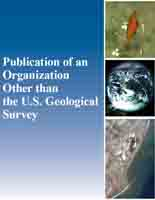
New horizons in remote sensing for forest and range resource management
Links
- The Publications Warehouse does not have links to digital versions of this publication at this time
- Download citation as: RIS | Dublin Core
Abstract
Forest and range resource scientists were among the first to recognize the potential of aircraft and satellite remote sensing for management of timber, forage, water, and wildlife resource. Today, data from a variety of sensor systems are being put to practical use for inventorying, monitoring, and assessing forest and range resources. In the future, improved sensor systems providing new kinds of data will be available. Likewise, new types of data handling and processing systems can be anticipated.
Among the new or anticipated aircraft and satellite systems and/or data are National High-Altitude Photograph II, U. S. Geological Survey-acquired Side-Looking Airborne Radar, the Landsat thematic mapper, the National Oceanic Resolution Radiometer, the French Systeme Probatoire d'Observation de la Terre (SPOT) satellite, the European Space Agency Earth Resources Satellite, the National Aeronautics and Space Administration Large Format Camera and Shuttle Imaging Radar (SIR-A, -B, and -C), and a variety of other systems in existence or planned by the Soviets, Japanese, Canadians, Chinese, Brazilians, Indonesians, and other.
Application examples are presented that illustrate uses of 1-kilometer-resolution AVHRR data, 80-meter Landsat multispectral scanner data, 30-meter Landsat thematic mapper data, and 10-meter SPOT-simulator data. These examples address fire fuel monitoring, land cover mapping, rangeland assessment, and soils landscape mapping.
| Publication type | Conference Paper |
|---|---|
| Publication Subtype | Conference Paper |
| Title | New horizons in remote sensing for forest and range resource management |
| Year Published | 1985 |
| Language | English |
| Publisher | American Society for Photogrammetry and Remote Sensing |
| Publisher location | Falls Church, VA |
| Contributing office(s) | Earth Resources Observation and Science (EROS) Center |
| Description | 12 p. |
| Larger Work Type | Book |
| Larger Work Subtype | Conference publication |
| Larger Work Title | Pecora 10 Symposium |
| First page | 30 |
| Last page | 41 |

